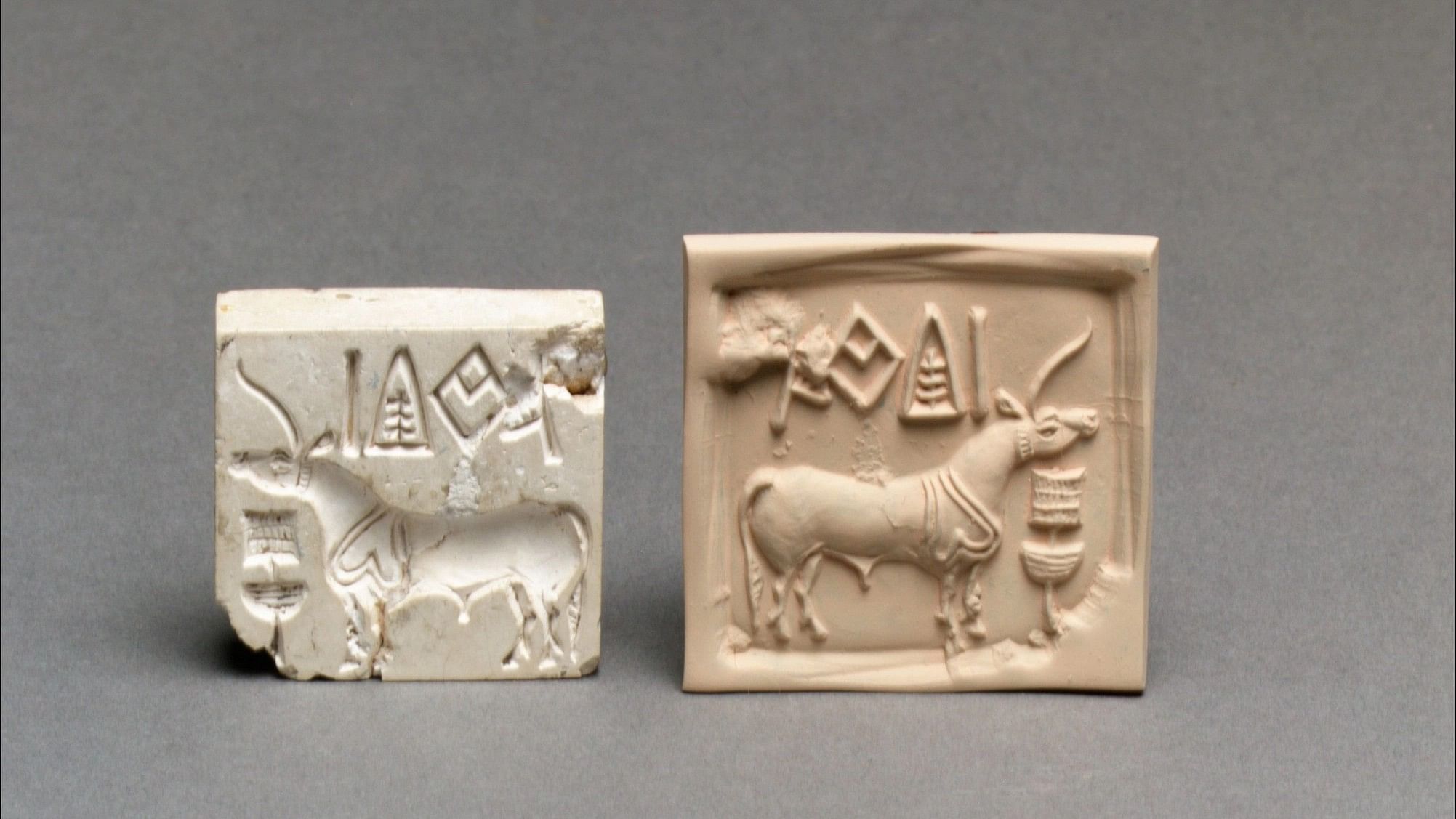
An animal, sometimes resembling a bovine creature and sometimes an antelope, depicted in profile with a single horn, often appears on Indus Valley seals. While the objects are often referred to as ‘unicorn seals’, historians have debated long about the animal being represented and the origins of the depiction.
Seals were likely used in internal and external trade in the Indus Valley Civilisation, as indicated by their discovery beyond the region. Primarily square or rectangular and made of steatite, or soapstone, one face of the seal is carved with an inscription and has a depiction of an animal.
Among the animal seals, the unicorn motif is the most common. Its earliest representation is dated to 2600 BCE and it was seen on seals for nearly 700 years, until 1900 BCE. Some theories have suggested that the animal is an extinct aurochs or an antelope. These theories explain the single horn as the animal is depicted in a strict profile. However, two-horned animals were often depicted with both horns in profile, leading to the hypothesis that the unicorn seals may be representations of a different single-horned creature. Further, the animal depicted is believed to be male, evidenced by the pizzle in the images. The animal is often depicted with an undefined object in front of it — which has been identified as a feeding trough, a cage, a tree or a container for soma (drink).
Historians have suggested that the unicorn seal may have been influenced by the iconography of Rsyasringa — a sage in Hindu and Buddhist mythology described as having deer horns and associated with fertility. The unicorn may also have symbolised fertility and rain in the Indus Valley, where agriculture and animal husbandry were key activities. Contemporary Western depictions of the unicorn can be traced to India. Ancient Greek texts, beginning with Ctesias of Cnidus’s fourth century BCE text ‘Indica’, stated that the unicorn was an animal from South Asia, whose horn could prevent epilepsy and provide immunity from poisons. Scholars debate whether this may have referred to the single-horned rhinoceros of the Indian subcontinent.
The magical associations of the unicorn survived into the medieval period, where the creature was frequently featured in bestiaries. Its association with purity and chastity also found relevance in Biblical contexts. From the fourth century CE, the unicorn was depicted as a fearsome beast that could only be tamed by a virgin maiden. This idea inspired several European paintings showing young women holding or seated next to a unicorn.
The undeciphered Indus script means that scholars do not yet have a method to interpret the contexts associated with the seals of the Indus Valley. Whether it was a fantastical creature, an artistic depiction or simply a symbol used in trade, the unicorn has since developed its very own rich mythology, even finding new meaning in popular culture, from books like Harry Potter to TV shows like My Little Pony.
(Discover Indian Art is a monthly column that delves into fascinating stories on art from across the sub-continent, curated by the editors of the MAP Academy. Find them on Instagram as @map_academy)